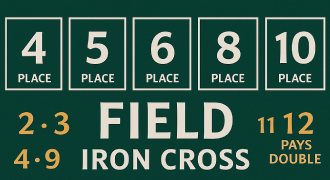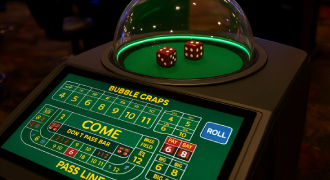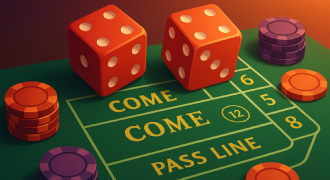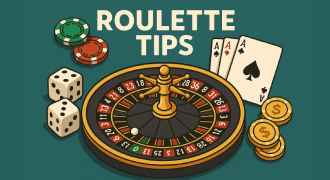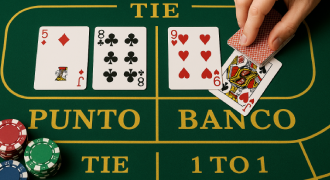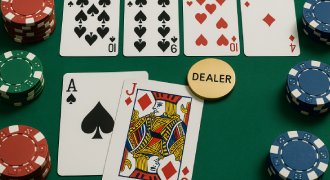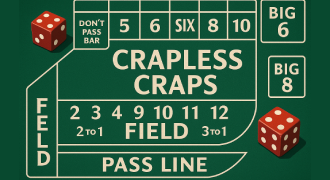Understanding Poker Hands: Rankings, Odds, and Strategy
You can learn the language of the felt by first mastering structure and hierarchy, then mapping probability to action. This guide moves from definitions to decision-making, showing how combinations form, how often they appear, and how to translate knowledge into profit.
We begin with a quick tour of deck mechanics and then advance through the full ladder of results before connecting theory to practice using visual aids, probability tables, and training tools. Along the way, you’ll see how poker hand rankings link to bet sizing, when patience outperforms bravado. Also how a single poker hand can swing based on board texture, blockers, and position.
Poker Deck Basics and Card Values
A standard 52-card deck uses four suits and thirteen ranks, with aces flexing as high or low depending on the casino game and the sequence you aim to complete. Ranks progress from Two through Ten, then Jack, Queen, King, and Ace. Good strategy starts with understanding composition and removal: your hand reduces the pool of live outs, which changes frequencies for you and your opponents. That math underpins the value of suited ness, connectivity, and high-card presence, all of which shape equity from pref lop through the river.
Beginners benefit from handling physical cards while learning digital play concepts, because tactile practice cements memory around combinations and blockers. When evaluating opening ranges, think in terms of poker hand cards that generate strong top-pair potential or robust draws, rather than isolated high cards that struggle in multiway pots. If you like trivia, the lore of the Old West often references dead man's hand poker as a reminder that history and myth swirl around the game, yet the math is timeless.
How Many Cards in a Standard Deck
The typical deck holds 52 unique cards: four suits multiplied by thirteen ranks. Jokers are excluded in mainstream poker formats, though some home variants incorporate them as wilds. Shuffling randomizes order, and dealing proceeds according to rules that balance fairness with pace, such as button-driven distribution in Hold’em and blinds to seed action.
🃏 Suits and Card Hierarchy:
| ♠️ Suit | 🎯 Value | 🔍 Notes |
|---|---|---|
| ♣️ Clubs | Equal to other suits | All suits share identical value — no suit outranks another in standard poker variants. |
| ♦️ Diamonds | Equal to other suits | |
| ♥️ Hearts | Equal to other suits | |
| ♠️ Spades | Equal to other suits | |
| 🂡 Ace | High or Low | Can complete both A-K-Q-J-10 and A-2-3-4-5 straights, but cannot “wrap around.” |
| 👑 Face Cards | K > Q > J | Rank higher than numbered cards but below Ace when Ace is high. |
| 🔢 Number Cards | 10 down to 2 | Ranked in descending order; no suit advantage applies. |
Suit Importance in Poker Rankings
Suits do not outrank one another for showdown purposes in the most common rulesets. However, suits matter for hand formation because flushes require five cards of the same suit, and suited hole cards open additional draws. The absence of suit priority also affects tiebreakers: two players holding identical five-card flushes in terms of ranks will tie regardless of suit.
Poker Hands Ranked from Strongest to Weakest
Every decision rests on where your combination fits within recognized categories, which is why a clear view of poker hand rankings is non-negotiable. New players memorize the ladder first, then learn how frequently each tier appears and how stack depth changes its realized value. With the full poker hand order in mind, you can shift from reactive calling to proactive value-betting and bluffing.
|
🃏 Hand |
📖 Description |
|
👑 Royal Flush |
A-K-Q-J-10 of one suit. The rarest and virtually unbeatable (only split if tied). |
|
🌊 Straight Flush |
Five sequential cards in the same suit (e.g., 8-7-6-5-4♥). Loses only to higher straight flushes. |
|
💥 Four of a Kind (Quads) |
Four cards of the same rank + a kicker. Often appears when boards pair/trip. |
|
🏠 Full House |
Three of a kind + a pair. Strongest versions are top set + highest pair. |
|
♦️ Flush |
Any five cards of the same suit, not consecutive. High card decides ties. |
|
📈 Straight |
Five ranks in sequence (any suits). Vulnerable to full houses if the board pairs. |
|
🔱 Three of a Kind (Trips/Set) |
Solid strength vs one-pair hands but weaker on coordinated boards. |
|
✌️ Two Pair |
Two distinct pairs + a kicker. Kicker often decides the winner. |
|
💑 One Pair |
Most common showdown hand. Top pair/top kicker can be strong but fragile. |
|
🂠 High Card |
No pair/straight/flush. Relies on position, initiative, and bluffing value. |
Poker Hand Charts and Visual Guides
Visual aids compress complex rules into quick-reference formats you can review between or even during sessions. A printable poker hand chart turns memorization into a glance-and-go habit, especially for beginners who are still internalizing open-raise and call ranges by position. If you like a hybrid approach, pair static visuals with short quizzes that test recognition under time pressure.
For condensed study, a poker hand rankings chart lists categories from strongest to weakest with examples drawn from common board textures. Some learners prefer color coding that highlights suited connectors, broadways, and pocket pairs to reduce cognitive load. Add spaced repetition to strengthen recall and speed up real-time identification. A simple ranking cue placed near your monitor can keep your focus tight without clutter.
Probabilities of Making Each Hand
Numbers guide expectations, which then guide tactics. The odds of flopping a set with a pocket pair sit around 11.8%, while completing a flush draw by the river from the flop is roughly 35%. Understanding how often each tier appears gives you context for how much to invest before and after the flop. That probabilistic clarity reinforces your grasp of poker hand rankings and cushions you from the emotional swings of variance.
At the margins, weak offsuit holdings frequently resolve into the worst hand in poker categories, which helps explain why tight preflop discipline outperforms fancy play in loose micro-stakes games. Combine equity calculations with pot odds to see when calls are profitable and when folds preserve capital. Over enough trials, your results converge toward expectation, provided your inputs remain consistent.
Understanding What Beats What in Poker
Memorize the tree of outcomes so you can evaluate strength in a heartbeat. A full house beats a flush, which beats a straight, and so on down the ladder to high card. Remember that board pairing and same-suit flops change everything, especially when you hold drawing hands that can improve across multiple streets. When you lock up the best hand in poker for a given spot, consider sizing up to capture maximum value unless stack depth or ICM says otherwise.
Spot dominance and reverse domination to avoid paying off thin in marginal cases. A top poker hand on the turn can collapse to a runner-runner sequence on the river, so balance protection with extraction. Tactically, mix in delayed c-bets and check-raises to keep ranges balanced across streets, especially in position where you command information advantage.
Tiebreaker Rules for Identical Hands
Ties resolve by comparing the five-card result, not all seven cards seen in community variants. If two players present the same category, kickers decide except in shared-board scenarios. For instance, when both show top pair and the same kicker, the pot splits. On flushes, compare the highest card of the suit and work downward as needed. Precision matters when the board already defines a strong poker hand and both players use the same five-card combination.
Strategy Based on Hand Rankings
Use category position to calibrate aggression and defense. Strong results invite thin value bets against calling stations, while middling ones rely on pot control and induced bluffs. The deeper the stacks, the more implied odds matter for speculative holdings such as suited connectors and small pairs. Assign ranges, weigh blockers, and convert reads into a plan that aligns with your perceived poker hand strength.
Study feedback loops that refine your intuition about poker hand rankings under pressure.
Adjusting Aggression to Hand Strength
On dry boards, top pair/top kicker thrives on small-to-medium bets that deny equity. On wet textures, size up with your strongest value and your best draws to maintain consistency. Against passive fields, bias toward thin value; against aggression, tighten calling thresholds and increase your 3-bet frequency with hands that block the top of villain ranges.
When to Fold Weak Hands
Discipline shines when equity is poor and reverse implied odds loom. Fold dominated pairs to heavy pressure on paired or monotone boards. Respect multiway action as a signal that stronger categories are live, and avoid chasing bottom-end straights or low flushes when ranges are tight.
A quick way to remember is to ask yourself, what is the best hand in poker, and then visualize A-K-Q-J-10 suited.
Pre-Flop vs. Post-Flop Considerations
Preflop decisions set the tone for pot geometry and initiative. Position expands playable ranges, while short stacks compress them. Postflop, apply a board-first lens: ask which range owns the texture, then build a plan that retains bluffs and value on compatible runouts. A simple review of poker hand rankings shows the full house above the flush, and the flush above the straight.
Tools and Resources for Practicing Poker Hands
Modern training environments blend interactive quizzes, solvers, and hand replayers. A concise poker hand cheat sheet supports quick refreshers during breaks, while apps deliver positional open chart and equity drills on mobile. As your game matures, switch to deeper poker hand analysis with scenario tagging, filtering by line taken, and EV comparisons to uncover leak patterns with precision.
|
🎰 Provider |
🎯 Paylines |
🔖 Symbols That Pay |
🎲 RTP |
💵 Min Bet (USD) |
🎁 Welcome Offer |
|
⚡ SpinWorks |
20 |
A, K, Q, J, 10, 🎭 Wild Joker |
96.4% |
$0.10 |
100% up to $500 + 50 free spins |
|
👑 CardForge Interactive |
10 |
Royal Icons, 👑 Wild Crown, ⭐ Scatter Star |
97.2% |
$0.25 |
200% up to $300 on first deposit |
|
🃏 NeoDeck Studios |
25 |
Ace High, Pair Emblems, 🃏 Wild Dealer |
96.9% |
$0.05 |
50% up to $200 + 20 free spins |
|
🧪 Quantum Play |
15 |
Suited Emblems, 🏺 Wild Pot, 🎖️ Scatter Badge |
97.8% |
$0.20 |
100% up to $150 on signup |
RTP expresses long-run theoretical return as a percentage. For instance, 97.2% indicates $97.20 is expected back per $100 wagered over a vast number of spins, though short-term outcomes deviate significantly. Minimum bets like $0.05, $0.10, $0.20, and $0.25 let you sample features and volatility without overexposing your bankroll. Evaluate volatility, hit frequency, and feature cadence alongside RTP to align expectations with your session goals.
Why Knowing Poker Hands
Clarity about categories eliminates hesitation at the table. When you can instantly map a board to likely outcomes, you convert uncertainty into specific lines, and you avoid wasting focus on second-guessing. Competence also improves communication with peers and coaches, enabling better feedback loops. Over time, fluency with poker hand rankings frees your attention to read opponents, exploit tendencies, and time your aggression with accuracy. In study groups, agree on vocabulary, adopt the same visual conventions, and keep a single source of truth to avoid confusion.
FAQ
What is the strongest poker hand?
A royal flush sits at the absolute top of the ladder.
Which hands are worth playing pre-flop?
Start with premium pairs, strong broadways, and suited connectors in late position, then tighten up early. Add hands when stacks are deep, tables are passive, or blinds are tight.
Can a flush beat a full house?
No, a full house beats a flush in formal hierarchies.
What is a kicker and why is it important?
The kicker is the highest unpaired side card used to break ties between identical categories. It often decides outcomes for one-pair and two-pair showdowns.
Are hand rankings universal across poker games?
Most community-card and stud variants use the same category ladder, though some games introduce wilds or special rules. Always check the house rules to avoid surprises.
What’s the rarest hand in Texas Hold’em?
The rarest natural result is the royal flush. Straight flushes are also extremely uncommon compared to sets, two pair, and one pair.

